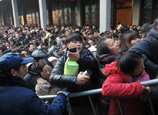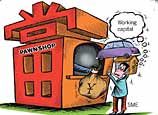
The European Commission concluded earlier this year that China was offering unfair advantages to certain domestic steel makers, a finding which could ultimately push the executive arm of the EU to raise import tariffs on Chinese mills, particularly those making coated steel.
Specifically, the commission alleges that the Chinese government has been restricting exports of rolled steel in order to keep the material abundant within the domestic market, according to reports from the Financial Times last week. This strategy artificially lowered the price of rolled steel, which in turn reduced the costs for mills that purchased the material as an ingredient for the production of coated steel. In the end, the commission argues that Chinese mills are able to unfairly undercut their foreign competitors in terms of price when they tap the export market.
Despite these assertions, the latest move from the EU may be much less of an attack against unfair competition than a strategy to shield struggling European steel makers from overseas rivals during difficult economic times. Right now, officials with the European Commission are jumping to unreasonable conclusions if they are drawing a direct line between steel export restrictions and the export prices of coated steel being sent abroad from China to markets in the EU.
If anything, Chinese coated steel makers are able to offer a low export price because of the overcapacity problems facing the industry. In a bid to expand their sales channels, Chinese mills have been looking to foreign markets in recent months to soak up their excessive inventories.
This is not the first time the EU has moved to put pressure on Chinese mills through allegations that government policy support was giving mills an unfair leg up overseas - trade officials in the EU did the same in 2007 and 2008 but failed to make their unjustified charges stick.
Most likely, the EU has chosen to mount another offensive against Chinese steel makers now as regional demand contracts in the face of a broad slowdown in growth. EU mills turned out 210 million tons of steel last year in a market that only called for 150 million tons, industry data show.
Steel production is a cornerstone industry for 23 of the 27 countries now in the EU and, taken as a whole, the region is the second largest steel maker in the world. In other words, we should not be surprised if policymakers in the union are highly motivated to protect their mills when competition arrives.


















![]()
